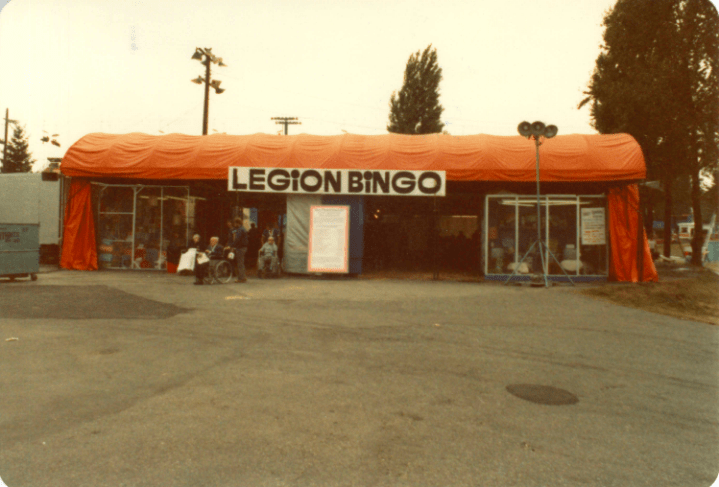The History of the Coroner’s Court, Part 3: The Bingo
- VPMA
- Feb 13, 2019
- 3 min read
Updated: Jul 7, 2020

This is part three of our series on the history of the Coroner’s Court.
Written by Sheena Koo
The Bingo
The former Coroner’s Court has been home to some dramatic moments. The very purpose of the place was to investigate death, and this in itself was already a macabre theme. Accordingly, inquests held in the room examined all kinds of deaths, ranging from accidental gas poisonings to traffic accidents all the way to cold-blooded murder. When it was in use, the morgue averaged 1,100 bodies a year and 1.5 inquests per week, thus cementing its fate as one of Vancouver’s most interesting heritage locations—one that harbours thousands of stories filled with death, drama and, more importantly, dutiful investigation to ensure the dead get justice even after their passing.
To give you an idea on numbers, the former Coroner’s Court investigated on average
A traffic death every week
A homicide every two weeks
An industrial death every month
75 deaths a year from suicidal or accidental domestic gas poisoning
*stats from How Come I’m Dead? by former Chief Coroner Glen McDonald with John Kirkwood.
The most infamous of these stories you can see in our True Crimes exhibit, held in the former Morgue at our museum. However, there are many others that are not crime related, but which are equally as fascinating.
One of our favourites concerns what McDonald called “the deadliest sport in Canada.” It wasn’t hockey, lacrosse, rugby or any other contact sport, as you might imagine. In fact, it wasn’t really a sport at all. It was a game and Bingo was its name-o.

A Legion Bingo tent at the PNE during the 1970s. Credit: Vancouver Archives.
In the late 1950s and throughout the ’60s, there was a surge in traffic deaths involving the elderly. McDonald estimated that there was one pedestrian death per week involving someone over 60 years of age. He attributed many of these deaths to the fact that the elderly would cross the street to attend their nightly Bingo games and end up at his morgue as fatalities.
He wrote:
“One of the joys for older people…is to go out at night, meet their friends and play Bingo. But they have other things in common: they’re over the age of 65 and their reflex actions are just not as quick as they used to be…. And they all love to wear black: black are their overcoats; black are their trousers; black are their dresses; black are their stockings; black are their shoes; black are their hats; black are their umbrellas.”
In order to prevent further deaths, which was the Coroner’s mandate, McDonald made strong recommendations and statements that instigated a media uproar. While he wanted to educate seniors on how to stay safe and avoid preventable death, newspapers wrote salaciously misconstrued headlines like “Aged ‘Should Stay Home,’” and “Old People Up in Arms!”
This battle to educate the elderly continued for many years, until 1961, when McDonald finally held inquests into the death of elderly individuals who had been killed by cars. As part of his plan to ensure seniors were aware of the full impact of these deaths, he comprised his jury entirely of old people.
And this persistence paid off—sort of. At the end of one of the inquests, his jury of seniors came back with a strong recommendation that the elderly wear white clothing at night. McDonald’s delight at this progress, however, quickly diminished when his jury, after making the recommendation to wear white at night, got ready to leave the Coroner’s Court all dressed in black.
He wrote: “But to my utter dismay, everyone was putting on his or her coat and every coat put on was as black as the ace of spades…. Here were all these dear old folks going out onto the street dressed like a convention of bloody undertakers. Hell!”
Luckily, McDonald arranged for his Chief Technician to tear up some white sheets to pin to the exiting seniors.
Perhaps not a salacious tale of crime and murder, the story of Bingo and seniors in Vancouver is still equally entertaining—and is just one of the many found here at The Vancouver Police Museum. You can learn more about it in our newest exhibit Behind the Lines: A Traffic Story (held in the former Coroner’s Courtroom, no less).

Or, if you want to explore the Courtroom after-hours with drinks, join us tomorrow, February 14th for an exciting Valentine’s Night event: Night Court. Selling out fast, this event gives you access to the entire museum after-hours, including a beer and wine bar in the Autopsy Suite along with plenty of Valentine’s Day activities.





Comments